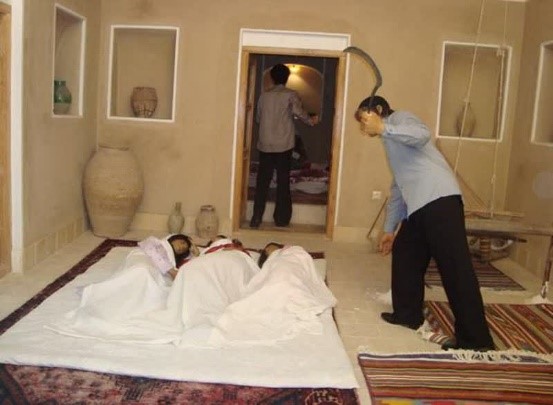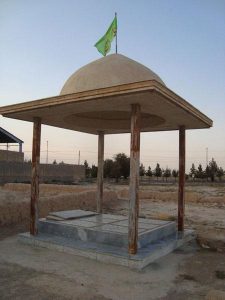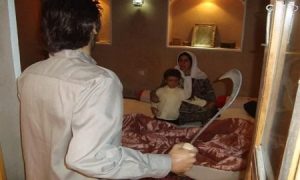By: Hujjatul Islam Sajjad Jamshidi
“The painful incident of “Abarkou” is the most obvious example of the hypocrisy of the Baha’i organization preserved in history.”
Turning to violence to continue survival is one of the obvious methods of cults and especially political creeds. The development of this phenomenon goes back centuries ago. So that violence as an important tool and as a pressure factor has a strategic aspect for the leaders of this creed.
According to many thinkers of humanities and sociology, such as Steven Hassan, Margaret Singer, Anthony Storer, Larry Nicholas and etc., the cult basically has the potential to use violence to eliminate opponents or create an atmosphere of terror and intimidation. In contemporary history, cults such as Babism, Bahaism, Taliban, Al-Qaeda, Mujahideen (People Mujahideen Organization) and… used this method according to the discretion of their leaders. Of course, some of these creeds have used this method intermittently and some have used it as an organizational method.
One example of the using violence can be found in Bahaism. Because from the very beginning of this destructive profession, according to the order of its leader, Mirza Hussain Ali Nouri (Baha) used the tool of terror to stabilize its position. He used terror to physically eliminate relatives and causal people, even his own brother (Mirza Yahya Sobhi Azal) to the point where Fereidun Adamit called the organization that Mirza Hussain Ali (Bahá) established on the bed of Babism, the device of “violence and Homicide” .
Murdering a 50-year-old woman and her 5 small children in Abarkouy, Yazd, by the brutal agents of Baha’ism may be considered as one of the dirtiest acts of this cult in its history. In this crime, the six-member family of Soghra was murdered in the most heinous manner for the crime of saying “no” to the Satanic propaganda of the Baha’i organization by the order of the Yazd Baha’i association by the Baha’i Ali Muhammad Shirwani along with his accomplices all of whom were unquestioningly obedient to the Baha’i faith.
The first question that arises in the mind of every reader is what was the reason for targeting a 50-year-old woman and to what extent was this woman dangerous for Baha’is?
Did this woman deserve to be exterminated and her children mutilated with shovels and axes just because of the warning she gave to religious leaders and Muslim people in religious meetings to prevent Baha’is from preaching in the village?
In the midnight of the solar month of Day 13, 1328 (S.H.), some Baha’i people attacked the house of a poor woman named Soghra Hosseinian in the village of Robat, in the suburbs of Abarqou, under the instigation of the Baha’i community of Yazd and its suburbs and murdered her and her 5 offspring including 15-year-old Ma’soumeh, 11-year-old Khadijah, 8-year-old Bibi and 6-year-old Ali Akbar in their bed with shovels and picks.
Mohammad Ali Shirwani (this is enough to describe this Baha’i who violently killed his son with one kick) and his accomplices first mutilated the three daughters of the family with a shovel and an ax after entering Soghra’s house. At this time, the mother wakes up and realizes what is going on, and because she and her two young sons were sleeping in another room, she goes to the back door and tries with all her might to stop these thugs and bloodthirsty executioners from entering the room, but finally those criminals entered the room and killed the mother along with her two young children in a horrible way with the same shovel and firewood cutting ax.

After several months of the escape of the perpetrators of this brutal crime due to the sensitivity of the people and the scholars, the judicial system of the Pahlavi regime was forced to arrest the perpetrators and according to Shirvani’s clear confessions and despite the all-out efforts of the organizations of this misguided cult to create deviation in the proceedings and work of the case, finally Shirvani was executed and his assistants in this crime were imprisoned.
However, with the necessary pressures and coordination of the American Baha’i Association in Shahrivar 1331, they managed to get their release.
The Pahlavi regime made every effort to erase the crime of this deviant cult from the minds of the society, so that it would have done a good service for its Western and Israeli masters and this deviant creed.
Therefore, this matter remained silent since then until 1384 S.H. when; for the first time, the text of the Yazd prosecutor’s indictment against the defendants was published by Keyhan newspaper and made the chaotic sleep of the Universal House of Justice even more chaotic.
To cover up this issue, the Baha’i organization started to destroy this important publication and undermine the role of itself and tried to confuse the minds of the community, especially the young Baha’i community, and hide the ugly and bloodthirsty face of the organization.
Therefore, now that several decades have passed since the fall of the notorious Pahlavi regime, there is a place for this crime to be recounted, and the real face of this deviant and hypocrite cult and the claimant of human rights has been revealed with the great efforts of the Muslim people of Iran under the leadership of the great leader of the Islamic Revolution, Imam Khomeini (RA).
A cult that speaks about humanity and peace with its deceptive slogans, but in practice commits such a horrible crime and kills several innocent and defenseless people in such a horrible way.
Of course, this is one of the crimes committed by the Baha’is and there are many cases of such crimes, murders, and violations of peace and philanthropy in the history of Baha’ism.
Ruqiyeh Hosseinian, the only survivor of the family that was murdered by the Baha’is, tells the people that I was there that night, 40 nights had passed since my wedding, and the family insisted that I stay. But I didn’t stay there because my husband was going to travel.

At the opening ceremony of Ebrat Abarkouh Museum, he has a bloody story from that morning:
Blood dripped from the door handle and lock. There was a smell of blood inside the house. One was in the cloth weaving workshop, the other was in the cistern, and several bodies were lying in the porch. Everyone was killed in a different way.
She continued whispering this sentence: May God forbidden happening such a day for anyone. It is not even easy to narrate, but the killers had martyred each and every member of the family in a horrible and cruel way.
With a crying voice that screamed seventy years of sorrow and suffering, she said: With the follow-up conducted by the government officials and the examination of public documents and the present evidence, it turned out that my mother, three sisters and two brothers were killed by the Baha’is.
Hosseinian, the only survivor of the Abarkouh family, which offered the most martyrs to Islam at the same time in one night, said: With the insistence of some scholars and the messages of Ayatollah Boroujerdi by the late philosopher, the case was referred to the judiciary of the then regime, and the sentence of imprisonment for the perpetrators of the crime and retribution for one of them was issued.
In the end, she pointed out: Currently, this historical house whose walls witness the crimes of the Baha’is and the events of that painful night has been reconstructed as a lesson for the enemies under the title “Ebrat Museum and Library” in the locality of Darb Qaleh Abarkoh and is open for the public to visit.

The Ebrat Museum of Abarkoh is the hidden hatred of the Muslim people of Iran in protest against the deviant cult of Baha’ism, and the people of Abarkoh today shout their hidden hatred for the crime of the Baha’is, and the people of Iran will never forget the crime caused by this colonial cult.
Source: The Book, Violence the means of Baha’ism, written by a group of Authors, Rozandish Publishing House, first edition, 1396 S.H.






